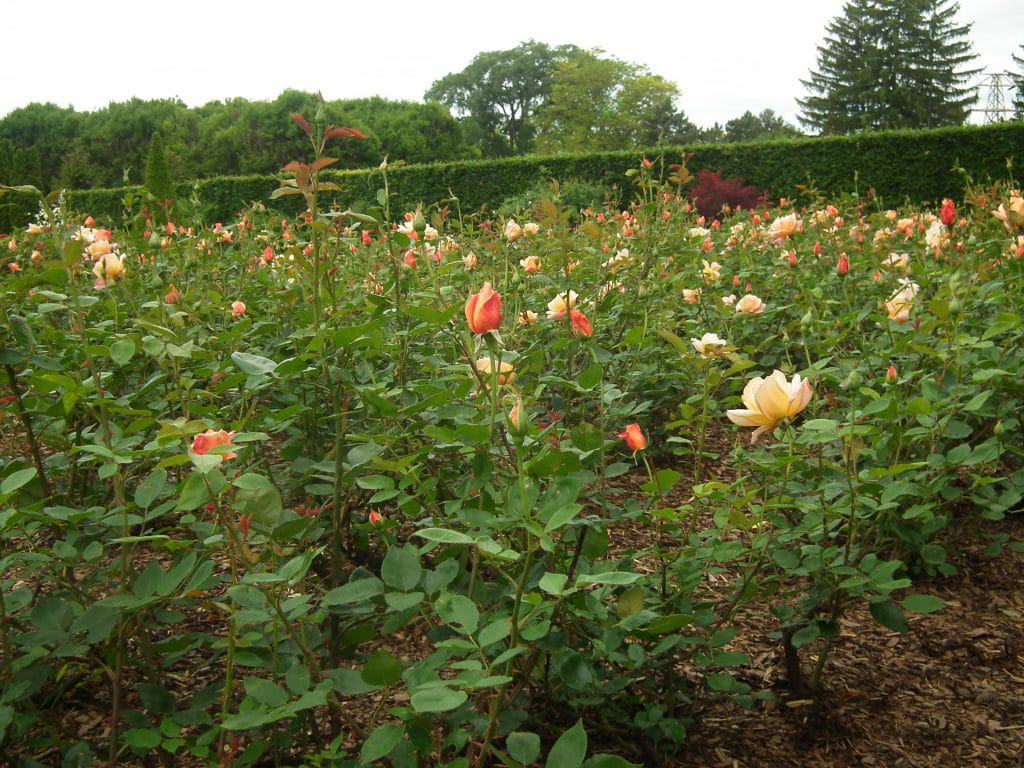
Marvelling at the creative plantings of the perennial borders, the herb garden and the colourful rose garden, you could be forgiven for not realizing that you’ve just walked into an outdoor classroom. This garden is one of a kind. Modelled after Britain’s Kew and the only horticultural teaching garden in North America, the School of Horticulture at the Niagara Parks Botanical Gardens is growing some of the most respected gardening professionals on the continent.
The day I visited in early June, third-year students were guiding a team of first- and second-year students in the planting of annuals in the formal rose garden. The process started two years ago when the students created a themed design for the beds based on the cosmos: one bed represents the sun while another reflects the moon. Then, plants were selected to fill out the design, and the seeds were ordered and grown in the school’s greenhouses earlier in the spring.


Third-year student Sarah Burt and her team were working in concert, laying down templates, tracing the designs in the carefully tilled and raked soil, marking the position of the plants with spacers and finally planting the annuals using a one-handed technique that quickly and efficiently settled each plant into its proper place. (In video below, Sarah talks about the design and planting process.)
In other parts of the garden, tender olive trees, myrtles and even coffee trees were coming out of the greenhouses and being moved into the formal herb garden where demonstration beds showcase different herbs and their various properties, from those used in beverages (hops for beer making and mint for teas), cooking (culinary chives, horseradish and juniper berries) and even poisonous or toxic plants, such as cow parsley. The school will be experimenting with QR codes which, through smart phone technology, will help tell the stories behind these and other plants throughout the grounds.
As with all educational institutions, the School of Horticulture is constantly conducting research and developing new techniques. In the rose garden, students have been testing disease-resistant cultivars to see which ones might perform better than some of the older varieties that are more susceptible to blackspot, for example. New areas of the grounds are being developed, too. Near the Butterfly Conservatory, a one-acre naturalistic garden is being created, representing five ecosystems that help support butterfly and insect life.
There’s lots to learn at the Niagara Parks Botanical Gardens—and for visitors, no exams are required!


I love the notion of a spacer for marking the position of plants. I often do mine by eye, and the results can be…well…cockeyed. Thanks for an interesting and informative post.
It’s a brilliant idea if you want to place plants precisely. Wait until you see the “GlennVention” idea for planting at Halifax Public Gardens!